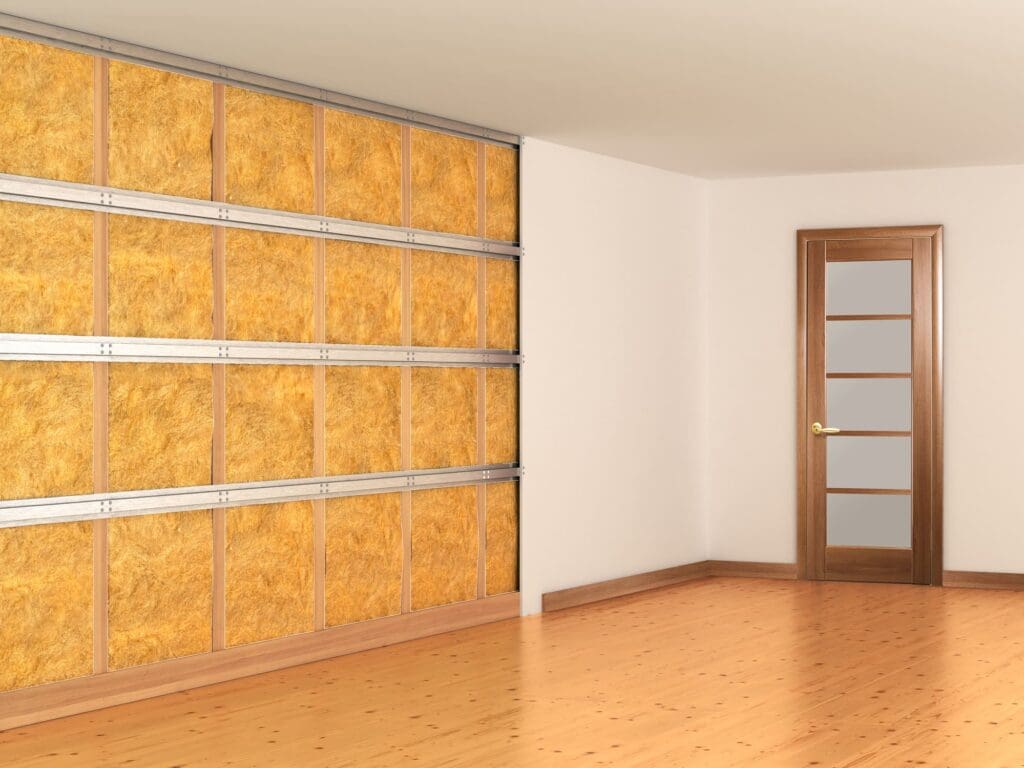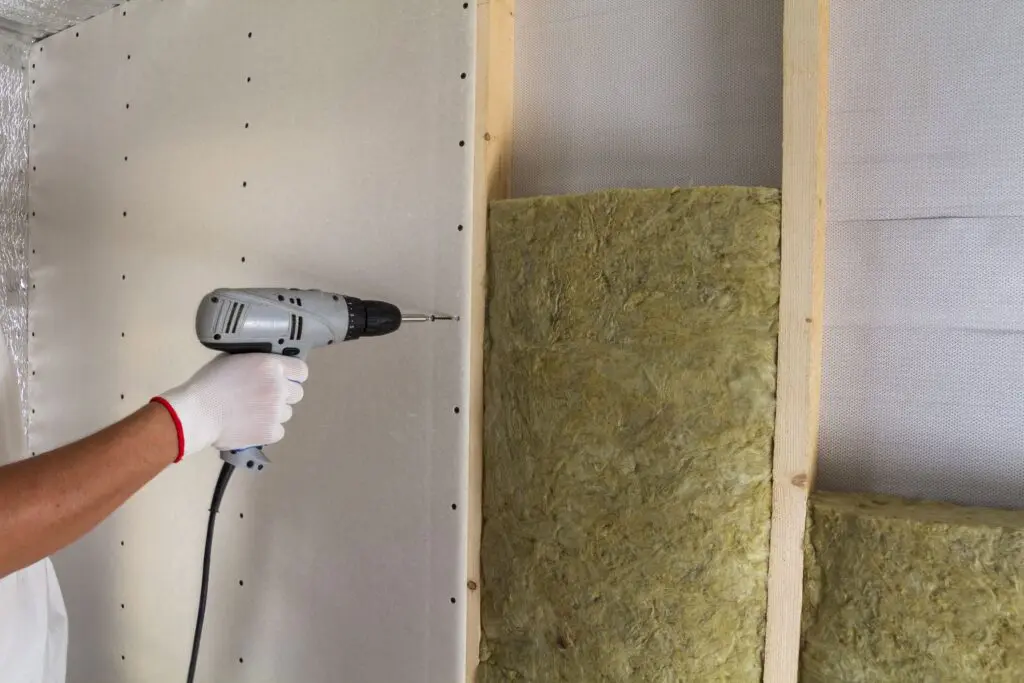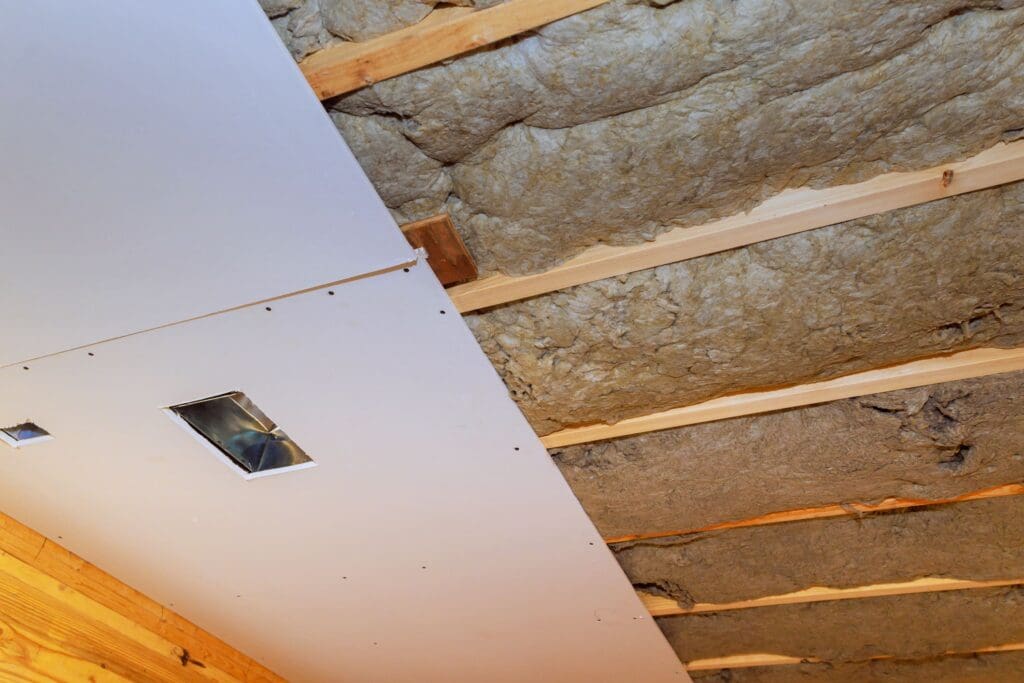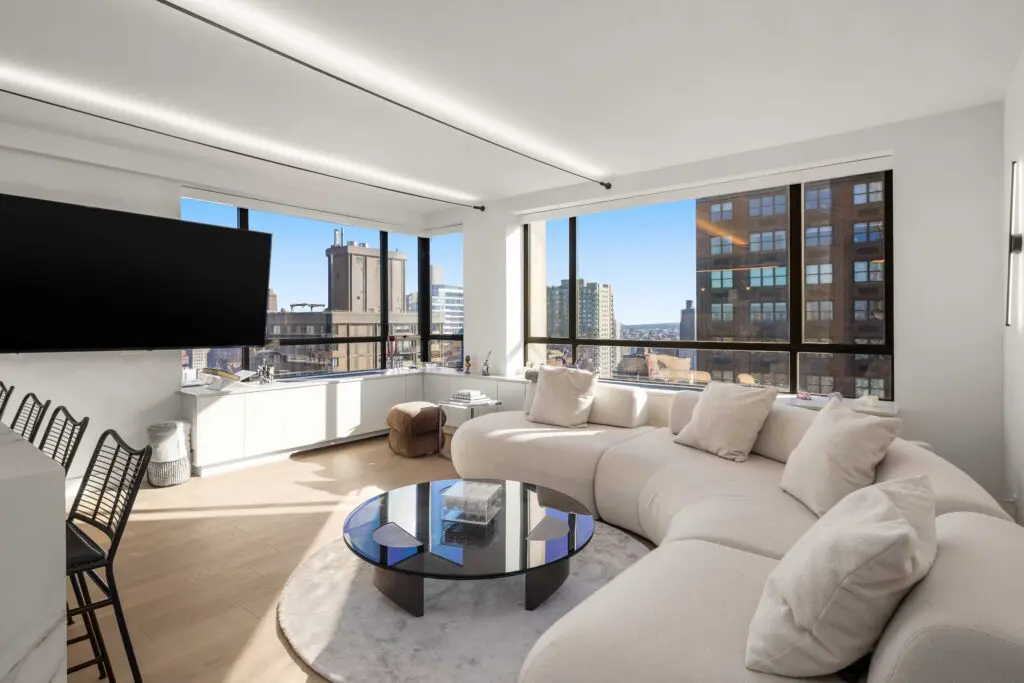Let’s be honest—living in New York City is exciting, but it’s not exactly quiet. Whether it’s honking horns, loud neighbors, or the mysterious 2 a.m. thuds from upstairs, noise is kind of a given when you’re in a city that never sleeps.
But here’s the good news: if you’re already planning a renovation, it’s the perfect time to address soundproofing. At NYKB, we often get asked, “Can we make the apartment feel more peaceful?” And the answer is yes—we’ve got tricks up our sleeves.


What can we actually do?
A lot. During a home renovation, it’s much easier to build soundproofing right into the bones of your home. Here are some of the ways we help clients keep the peace:
1. Soundproofing Floors in NYC:
If you’ve ever heard every heel click from your upstairs neighbor, you know the pain. We use acoustic mats or cork underlayments beneath your flooring to muffle footsteps and other vibrations. Also In most NYC condo and co-op buildings, there is a rule that requires homeowners to install a sound-dampening layer underneath new floors. This isn’t just a suggestion; it’s a requirement. The sound-dampening layer, which is placed between your new flooring and the subfloor, helps absorb sound and reduce vibrations that could otherwise disturb the units below.


2. Soundproofing Walls in NYC Apartments:
When it comes to soundproofing, walls do a lot of heavy lifting—especially in NYC, where you might be sharing them with a neighbor (or two). Whether it’s muffling loud conversations, music, or the occasional barking dog, upgrading your walls can make a noticeable difference.
Here’s how we usually approach it during a renovation:
Insulation Upgrades
Standard insulation is good, but we often recommend mineral wool or other sound-dampening materials that are specifically designed to absorb sound waves. It’s a great first step—especially in shared wall situations.
Double Drywall + Green Glue
This combo is a game-changer. We add a second layer of drywall and use an acoustic sealant called Green Glue between the layers. It acts almost like a cushion, breaking up sound vibrations before they travel through the wall. It’s one of the most effective ways to block airborne noise.
Resilient Channels
Think of these as little metal strips installed between your wall studs and the drywall. They help decouple the drywall from the structure itself, which reduces how much sound can travel through the framing. It’s a more advanced method, but incredibly effective—especially in noisy buildings.
Decor-Forward Options
If you’re not opening up the walls but still want to soften sound in a room, we can get creative with design-forward solutions like acoustic wall panels that double as décor, bookshelves filled with books, or even textured wall treatments that help reduce echo.


3. Soundproofing Ceiling in NYC Apartments
Drop ceilings aren’t just for offices anymore. When done right, they can look modern and clean—and they do a great job at reducing overhead noise. We often recommend acoustic tiles or a suspended ceiling system paired with insulation to help block out sounds from upstairs neighbors (you know, the ones who seem to pace in boots at midnight).
Walls and ceilings work hand in hand when it comes to soundproofing. For walls, adding extra layers of drywall with acoustic sealants, or using resilient channels, can significantly cut down on noise transfer between rooms or neighboring units. And if you’re doing both at once—as part of a larger renovation—it’s the perfect opportunity to fully upgrade your space for comfort and quiet.


4. Doors & Windows:
Swapping out hollow-core doors for solid-core ones is a simple upgrade that makes a noticeable impact. Add weatherstripping around the frame, and you’ve got a tighter seal that helps block sound from hallways or adjoining rooms. As for windows, if you’re dealing with street noise (hello, sirens, and construction), upgrading to double or triple-pane windows can dramatically reduce outside noise while also improving energy efficiency. It’s a win-win.
Want it to look good, too?
Of course. No one wants their apartment to feel like a padded room. We’re all about blending function and aesthetics. Think custom built-ins that double as noise barriers, or acoustic panels that look like art. Even soft finishes—rugs, drapes, upholstered furniture—help absorb sound naturally.
A few things to keep in mind
If you’re in a co-op or condo, we’ll always check your building’s rules around flooring and noise mitigation. And while we can significantly reduce sound, no solution is 100% noise-proof. Still, our clients often tell us the change is night and day.
Let’s create your quiet space
At NYKB, soundproofing isn’t just an afterthought—it’s part of smart, thoughtful design. So if you’re dreaming of a home where you hear less of the city and more of your thoughts, let’s talk. Your peace of mind might just be one renovation away. Schedule your free consultation today for a quieter home.

